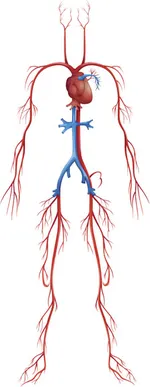Peripheral Vascular Program
Peripheral Vascular Disease occurs in the arteries and veins that carries blood to the arms and legs. In PVD, the arteries and veins slowly become narrowed or blocked when plaque gradually forms inside the walls. When they are blocked, blood cannot get through to nourish organs and other tissue, causing damage to the tissue and eventually, tissue death.

While PVD can build up over a lifetime, the symptoms may not become obvious until later in life when the arteries and veins are narrowed to about 60 percent. Symptoms include:
• leg discomfort
• pain or cramping that develops with activity and relieved
• with rest
• numbness
• weakness
• heaviness or fatigue in the leg muscles when walking
• burning or aching pain in the feet and toes when resting
• cool skin in the feet
• redness or other color changes of the skin
• increased occurrence of infection
• toe and foot sores that do not heal
PVD is diagnosed through simple non-invasive tests:
• ankle brachial index - a measurement of blood pressure in
•the lower legs compared to the blood pressure in the arms
• a pulse volume recording, using blood pressure cuffs on
• the arms and ankles to measure the pulse
• vascular ultrasound
Peripheral Vascular Disease Animation
Peripheral vascular disease or PVD is a slow, progressive circulation disorder that may affect any of the veins, arteries, or lymph vessels. By viewing this animation, you can learn more about what you can do to prevent this disease.
For more information about Peripheral Vascular Disease (PVD) call 217-238-4644.









